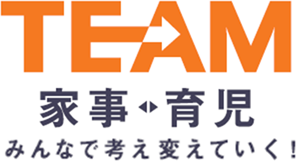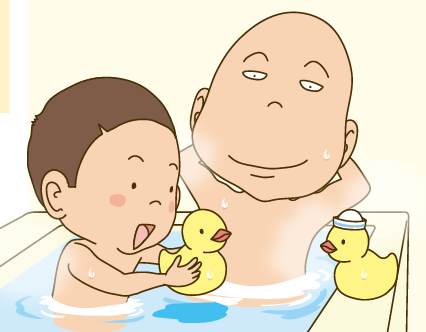Table of Contents
Parenting Manga “Bath is a Barometer of Growth”
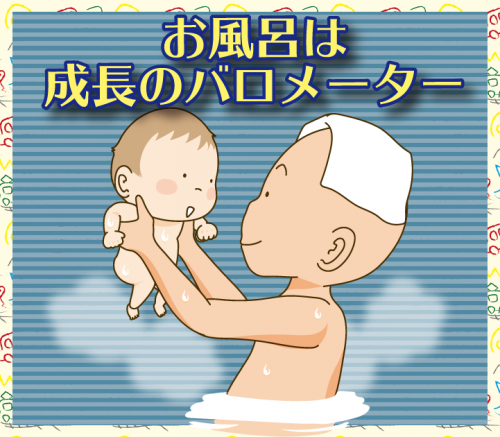
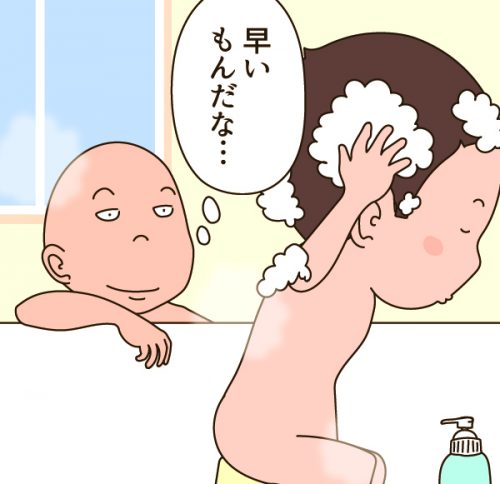
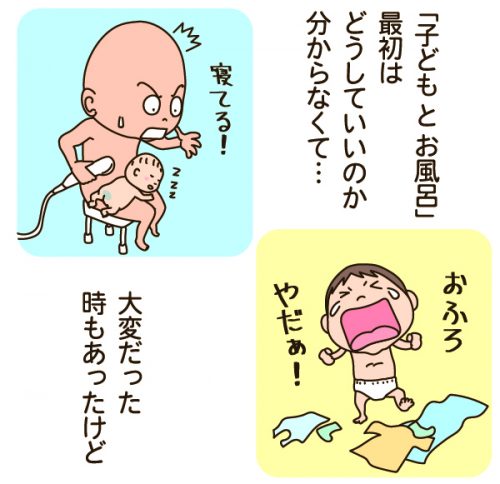
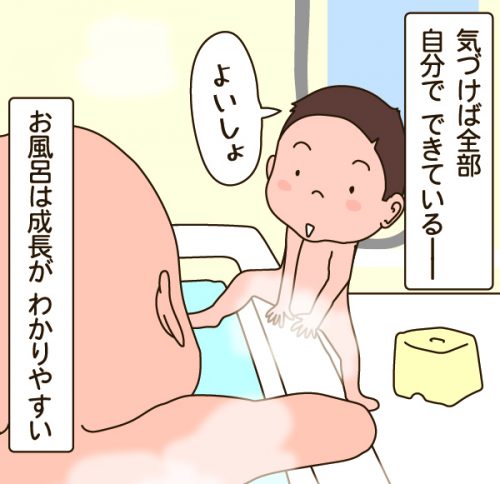
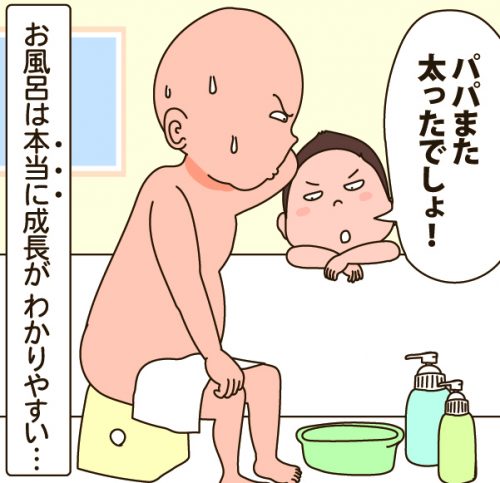

Profile
Eiichi
After working for a design company in Tokyo, he became a freelance illustrator. He is a hard-working father who creates animation, manga, and illustrations, including winning the Yubari International Fantastic Film Festival’s International Short Film Showcase Division Excellence in Animation Award.
Parent-child bonding! Take a bath with your dad!
The bath is a great way for parents and children to get to know each other,
This is an important time for relaxation and communication.
But some moms and dads have a hard time because their kids don’t like to take a bath.
I think there are a lot of them.
So this time,
Here are some ideas on how to make the bath an enjoyable time.
Let’s foster family bonding in the bath.
In this issue, we interviewed Tomoyo Kawashima, a midwife who is active as a life supporter of women and childcare through writing, media appearances, and lectures, about how to take a bath with her child and tips for working with mothers.
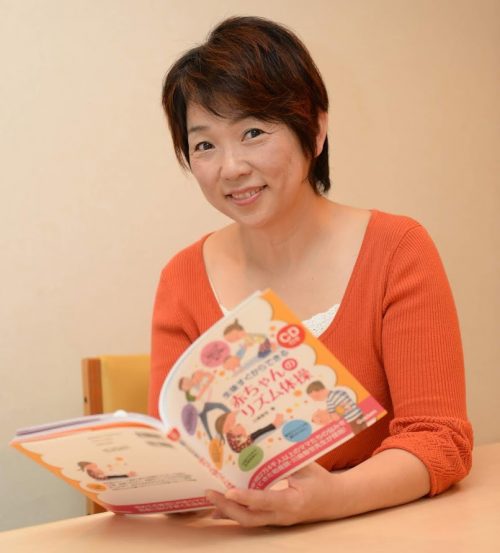
Benefits of taking a bath
The bath has three major benefits.
The first is to keep the child hygienically clean and prevent bacterial infections. Bathing can prevent a variety of skin-related problems such as eczema and rashes.
It also allows children to feel how good it feels to clean their bodies and keep their underwear clean.
Second, it relaxes both body and mind, boosts metabolism, and improves sleep. Spending more time in the bathtub also uses energy, which can help put children into a deep sleep and prevent nighttime crying.
Third, they can play educational games, such as singing songs, or showing how fun it is to play with hot and cold water.
In addition, bath time offers many other benefits, such as enhanced parent-child communication and improved physical function.
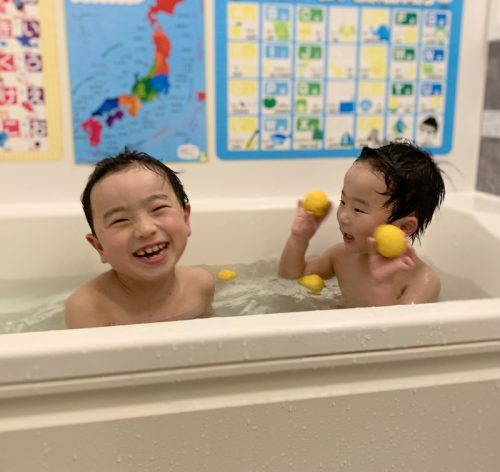
Learn how to wash your body with a moniker
Around the age of one, children begin to imitate their moms and dads.
Let’s take advantage of this habit and help them master how to wash their bodies.
At this time, be careful not to say in a commanding tone, “Do it. Do not use a commanding tone.
Since the earliest stage of earliness continues until around the age of 3, it is difficult for the child to move on from this way of communicating.
It can also lead to disliking the bath because you see it as a place where you have to give orders all the time.
Therefore, it is important to let them learn by imitation, rather than by parents trying to wash them unilaterally, for example, by using shampoo foam to create different hairstyles when washing their hair, or by having them imitate the way their father washes his body.
Make body washing a playful and enjoyable activity.
As a parent, while allowing your child to wash himself/herself, communicate with your child to see if he/she is thoroughly washing the scalp and every part of the body, and if he/she is having any mental or physical problems.
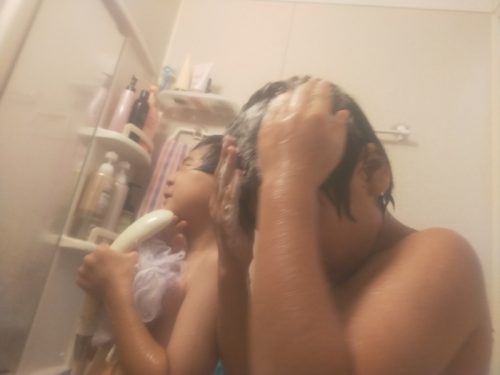
Let’s get mom and dad to work together and give you a bath!
When bathing a child, it is important for mom and dad to work together.
For example, you might try the following collaboration methods
Ideally, the infant should be thirsty after taking a bath and be able to fall asleep while feeding milk.
Therefore, the father bathes the child at night, at a time before the child wants to be fed.
For families using formula, mom will prepare the formula in the meantime.
Once out of the bath, dad will put the child to sleep using the milk that mom has prepared for him.
In the meantime, mom should take a leisurely bath to raise her body temperature.
If the child does not sleep well, give the mother warm breast milk after bathing and put the child to sleep with the father.
This division of responsibilities between mom and dad before and after the bath will make daily bathing easier.
When they become toddlers, they will develop the habit of going to bed early and waking up early if bath time is set so that they can fall asleep around 9:00 p.m.
Also, educate them on the manners of putting on and taking off clothes and bathing, while nurturing their ability to do it on their own.
When dads enjoy bathing with their children, it not only increases interaction with their children, but also brings a sense of physical and mental relaxation to moms.
Cherish bath time as a time for family bonding.
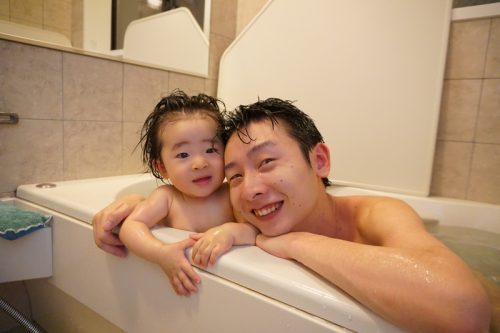
Let’s play in the bath with Dad.
The bath is an important time when you can face your child both physically and mentally.
Families with children who dislike taking baths want to know how they can enjoy bathing with their children.
We therefore asked Fumi Takei, a professor at Doshisha Women’s University who has taught water, sand, and mud play to many parents and children, for some bath games that will make even children who do not like baths enjoy taking a bath starting this evening.
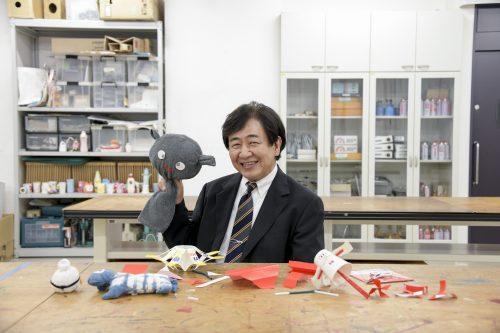
Let’s create empathy in the bath.
Dads and children usually live in separate everyday worlds.
It is difficult in everyday life for parents and children to see things from the same perspective, as they each live with different values and perspectives.
However, the bath can easily become a place where people can communicate through shared values and sensory experiences such as “warm” and “pleasant,” and it is easy to create a sense of empathy and security.
However, it takes some ingenuity to make the bath seem like a fun place for children.
The reason why many children dislike taking a bath may be because parents and children do not find enjoyment in it because the purpose of taking a bath is different from that of taking a bath in the first place.
Think about how you can make them experience “fun” in the bath.
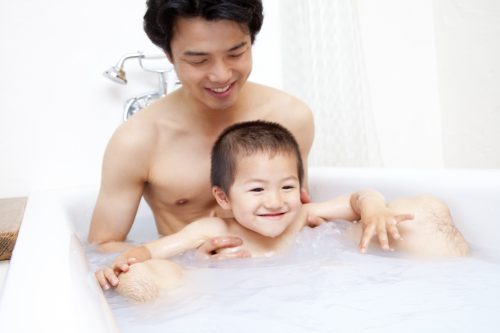
Let’s play in the bath.
The key to playing in the bath is “feel” and “sound.
Below are some simple examples, which you can apply and enjoy with your children.
| Without tools playing |
buzzing | Place your mouth on the child’s arm or stomach and blow to create a loud bubbling sound. Touching a child’s skin doubles the affection! |
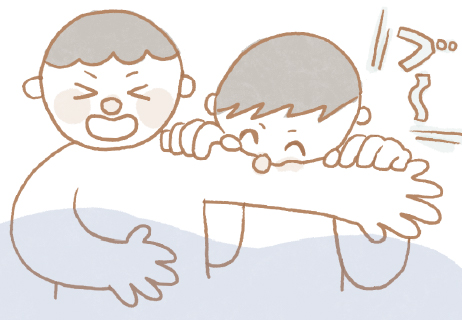 |
|---|---|---|---|
| feeling chilly warm play |
Simply touch the water and hot water alternately, but nurture the sense of touch by playing while saying “cold” and “warm” aloud. | 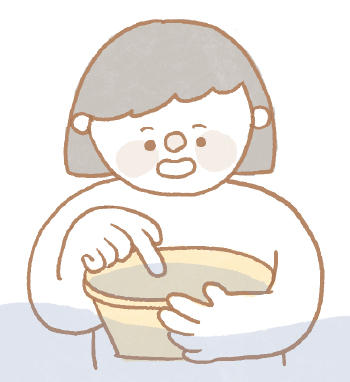 |
|
| make-believe game | Just like applying lotion, Let’s put hot or cold water on your cheeks and other flats. |
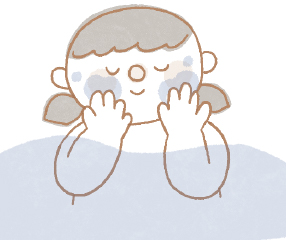 |
| Tools. playing |
PET bottle (clear plastic beverage bottle) catching (in swimming) |
A small plastic bottle container is submerged in the bath, and the children play catch it as it floats to the surface. The container is filled with hot water, and by pushing the bottle, the hot water is shot out like a bazooka. |
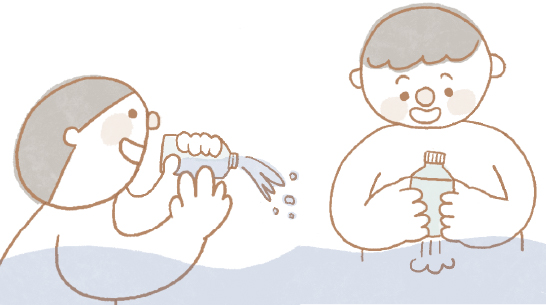 |
|---|---|---|---|
| Towel balloons | Familiar towel balloons. There are a variety of ways to enjoy the water, such as making balloons of various sizes by covering the surface of the water with a wet towel, or making noise. Making bubbles is another way to enjoy it. |
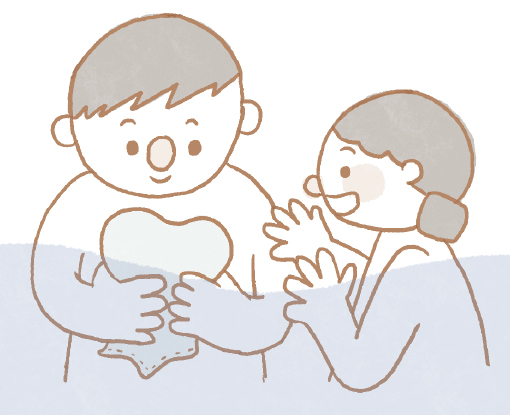 |
|
| plastic bag shower |
Fill a plastic bag with water, It is used as a shower with a small hole. |
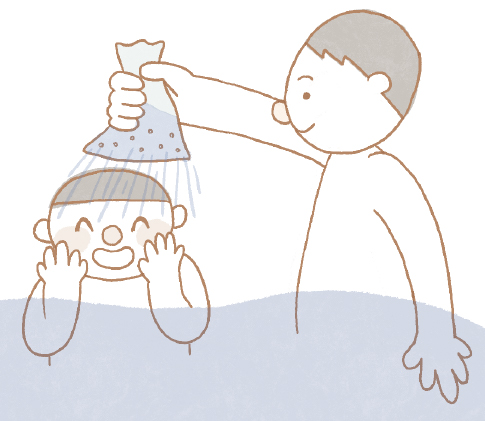 |
|
| making things out of buckets | The tub is submerged to create various sounds and bubbles. Loud noises can be enjoyed by using onomatopoeic words such as “It sounds like an elephant fart” or “bokon bokon. |
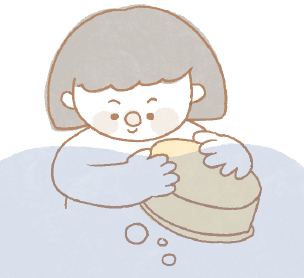 |
|
| Towel Tug of War | Attach the wet towel to each other’s body and move away from the other, being careful not to dislodge the towel from your own body. The winner is the one who has the towel stuck to his or her body until the end! |
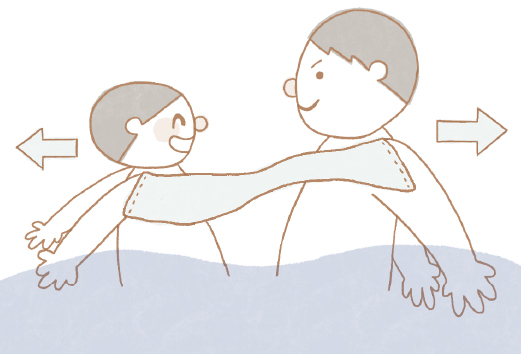 |
| Play without tools | Play without tools |
|---|---|
| buzzing | |
| Place your mouth on the child’s arm or stomach and blow to create a loud bubbling sound. Touching a child’s skin doubles the affection! |
|
 |
|
| chilly and warm play | |
| Simply touch the water and hot water alternately, but nurture the sense of touch by playing while saying “cold” and “warm” aloud. | |
 |
|
| make-believe game | |
| Apply hot or cold water to the cheeks and other parts of the body as if you were applying lotion. | |
 |
| Play with Tools | Play with tools |
|---|---|
| PET bottle catch | |
| A small plastic bottle container is submerged in the bath, and the children play catch it as it floats to the surface. The container is filled with hot water, and by pushing the bottle, the hot water is shot out like a bazooka. |
|
 |
|
| Towel balloons | |
| Familiar towel balloons. A wet towel is placed over the surface of the water to make balloons of various sizes, and they can also be used to make sounds. Making bubbles is another way to have fun. | |
 |
|
| plastic bag showers | |
| Fill a plastic bag with water and make a small hole to use it as a shower. | |
 |
|
| making things out of buckets | |
| The tub is submerged to create various sounds and bubbles. Loud noises can be enjoyed by using onomatopoeic words such as “It sounds like an elephant fart” or “bokon bokon. |
|
 |
|
| Towel Tug of War | |
| Attach the wet towel to each other’s body and move away from the other, being careful not to dislodge the towel from your own body. The winner is the one who has the towel stuck to his or her body until the end! |
|
 |
Thus, use tools, play in the bathtub, and many other ways to make the bath a fun place.
Also, when washing the body, instead of just washing the body, it would be good to give it a name, such as “Awabukubuku” or “Nyuru Nyuru Nyuru Play,” so that it can be done in a playful way.

The communication that takes place in the bath is a time when you can face your child thoroughly as a naked relationship.
As your children grow older, you will probably have fewer opportunities to go in together, so cherish this time.

